- Los Angeles Southwest College (LASC) has and continues to be a catalyst for change in its community through the programs it offers and the services it provides. Students come to LASC for a variety of reasons - from attaining work skills necessary to seek employment in their chosen field to preparing for transfer to colleges and universities to receive their Baccalaureate degree to accessing non-credit offerings such as citizenship and English language training to further specific personal goals. Often, students enroll at LASC and just immerse themselves in lifespan learning. Los Angeles Southwest College (LASC) is a learner-centered institution dedicated to meeting the needs of learners – the students and community who access the college for programs; and the faculty, staff and administrators who provide learning opportunities and support.
School Highlights
Los Angeles Southwest College serves 9,536 students (7% of students are full-time).
The college's student:teacher ratio of 31:1 is lower than the state community college average of 32:1.
Minority enrollment is 91% of the student body (majority Hispanic), which is more than the state average of 77%.
Quick Stats (2025)
- Enrollment: 9,536 students
- In-state tuition: $1,220
- Out-state tuition: $6,810
- Student:teacher ratio: 31:1
- Minority enrollment: 91%
- Source: Integrated Postsecondary Education Data System (IPEDS)
School Overview
The teacher population of 312 teachers has stayed relatively flat over five years.
Los Angeles Southwest College
(CA) Community College Avg.
Carnegie Classification
Associate's Colleges: High Transfer-High Nontraditional
Baccalaureate/Associate's Colleges: Associate's Dominant
Institution Level
At least 2 but less than 4 years
At least 2 but less than 4 years
Institution Control
Public
Public
Total Faculty
312 staff
294 staff
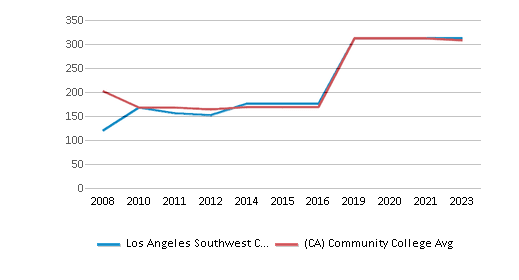
School Calendar
Student Body
The student population of Los Angeles Southwest College has grown by 48% over five years.
The student:teacher ratio of 31:1 has increased from 17:1 over five years.
The Los Angeles Southwest College diversity score of 0.65 is less than the state average of 0.70. The school's diversity has grown by 7% over five years.
Total Enrollment
9,536 students
2,311 students
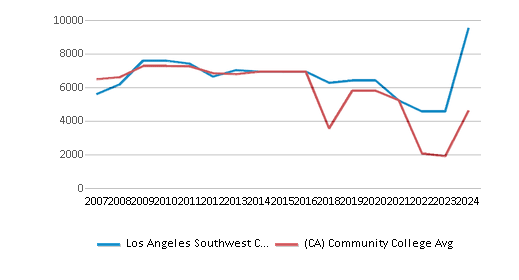
Student : Teacher Ratio
31:1
32:1
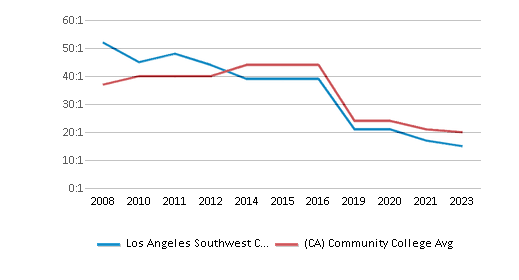
# Full-Time Students
622 students
1,232 students
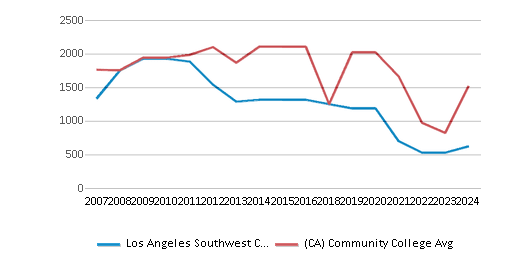
# Part-Time Students
8,914 students
8,299 students
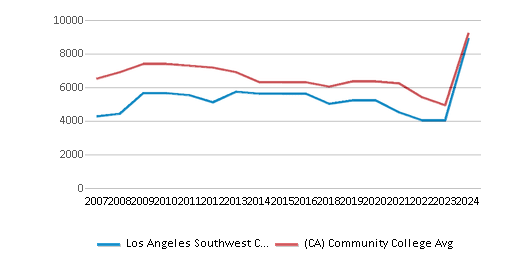
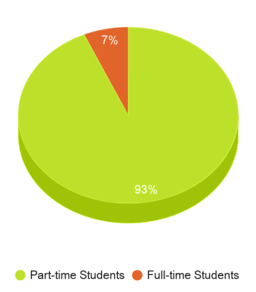
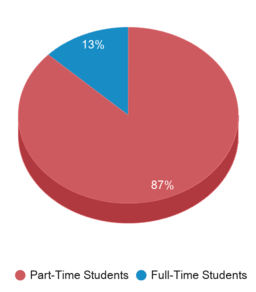
# Enrollment Undergraduate
953 students
240 students
# Full-Time Undergraduate Students
622 students
1,155 students
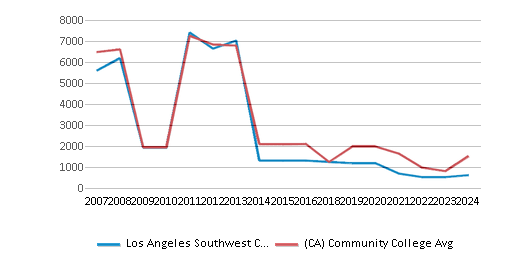
# Full-Time Graduate Students
n/a
63 students
# Part-Time Undergraduate Students
8,914 students
8,457 students
# Part-Time Graduate Students
n/a
10 students
Total Dormitory Capacity
n/a
140 students
% American Indian/Alaskan
n/a
n/a
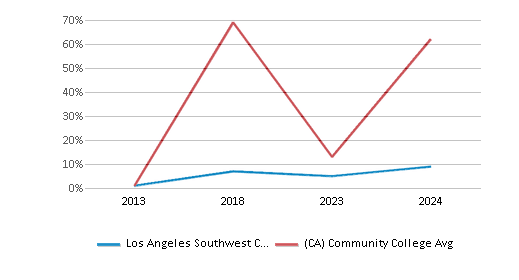
% Asian
5%
13%
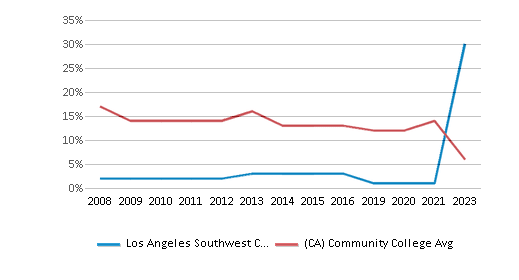
% Hispanic
49%
47%
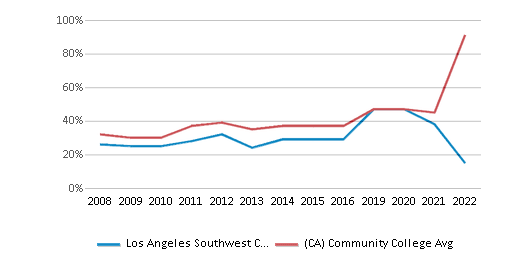
% Black
31%
7%
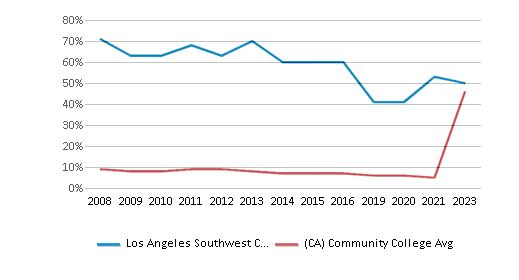
% White
9%
23%
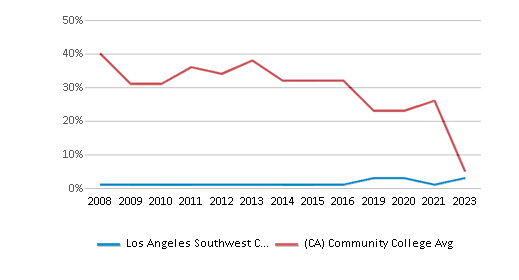
% Hawaiian
n/a
1%
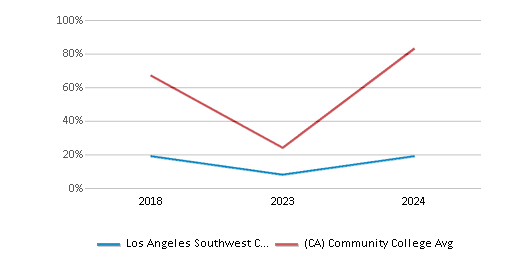
% Two or more races
3%
5%
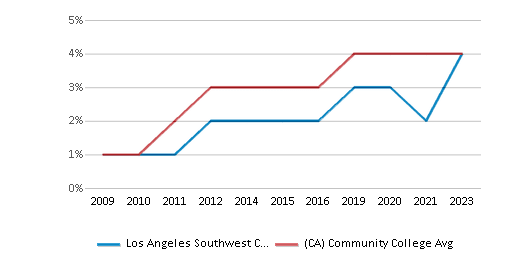
% Non Resident races
n/a
1%
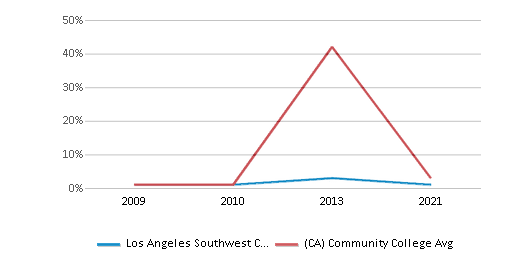
% Unknown races
3%
3%
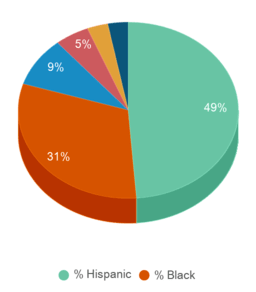
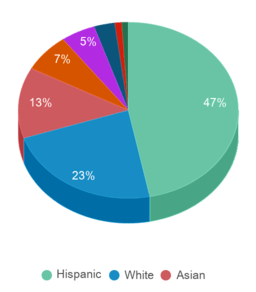
Diversity Score
0.65
0.70
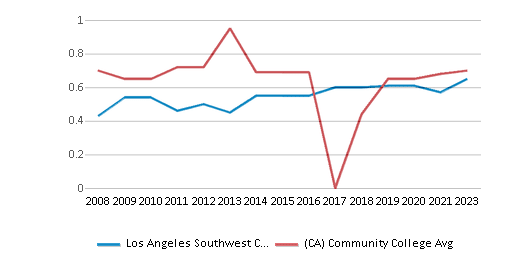
College Completion Rate (Students who graduate in less than 4 years)
0.1895%
0.4221%

College Completion Rate (Students who graduate in 4 years or more than 4 years)
n/a
0.4304%
Average Graduate Earnings (10 Years)
$30,200
$34,700
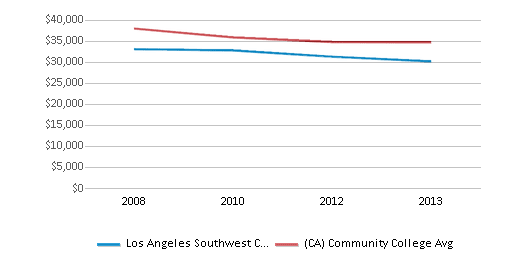
Tuition and Acceptance Rate
The public in-state tuition of $1,220 is less than the state average of $1,236. The in-state tuition has stayed relatively flat over four years.
The public out-state tuition of $6,810 is more than the state average of $6,547. The out-state tuition has declined by 20% over four years.
In-State Tuition Fees
$1,220
$1,236
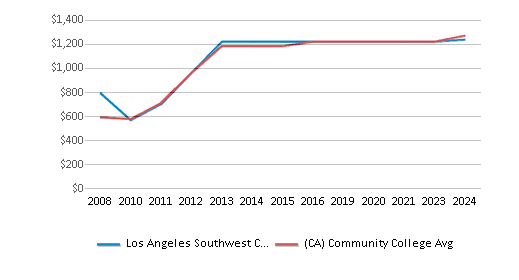
Out-State Tuition Fees
$6,810
$6,547
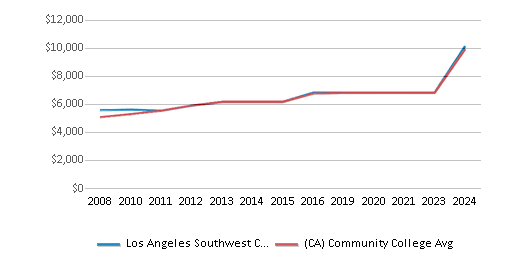
% Students Receiving Some Financial Aid
85%
85%
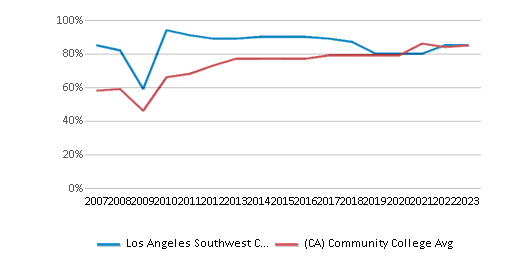
Median Debt for Graduates
$10,038
$10,500

Median Debt for Dropouts
$9,500
$6,239
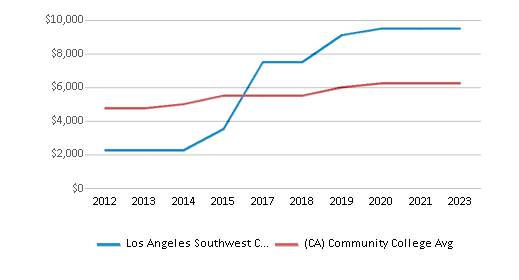
Acceptance Rate
n/a
92%
Source: 2024 (or latest year available) Integrated Postsecondary Education Data System (IPEDS)
School Notes
- On September 11, 1967, Los Angeles Southwest College officially opened its doors with 600 students and 22 full-time faculty members. Since then, Los Angeles Southwest College has established itself as an educational and cultural hub of the southern part of Los Angeles and surrounding communities. In addition to classroom instruction, students are exposed to a myriad of learning experiences to broaden their horizons, to expand their options and alternatives, to develop an appreciation for the academic work ethic, and to understand intellectual pursuits. Our graduates are among the most successful — ranging from medical professionals and professional athletes to recording artists and educators. To accomplish the educational philosophy and mission of the Los Angeles Community Colleges, Los Angeles Southwest College offers the following types of educational programs Transfer, Occupational, General Education, Transitional Education, Continuing Education, Community Services and Joint Programs.
Frequently Asked Questions
How much does Los Angeles Southwest College cost?
Los Angeles Southwest College's tuition is approximately $1,220 for In-State students and $6,810 for Out-State students.
In what neighborhood is Los Angeles Southwest College located?
Los Angeles Southwest College is located in the South Los Angeles neighborhood of Los Angeles, CA. There are 1 other community '.college.' located in South Los Angeles.
Recent Articles

Obtaining Your Bachelor's Degree at a Community College
Explore the evolving landscape of community colleges offering bachelor's degrees, addressing affordability, accessibility, and workforce needs.

A to Z of Community College Certificates and Courses
From business and healthcare to technology and skilled trades, the article showcases the breadth of options available to students seeking to enhance their knowledge, develop new skills, or pursue career advancement.

What is a Community College?
This comprehensive guide explains what a community college is, its history, and its role in higher education. It covers the types of programs offered, differences from four-year colleges, benefits of attending, and important considerations for prospective students, providing valuable insights for those exploring educational options.









